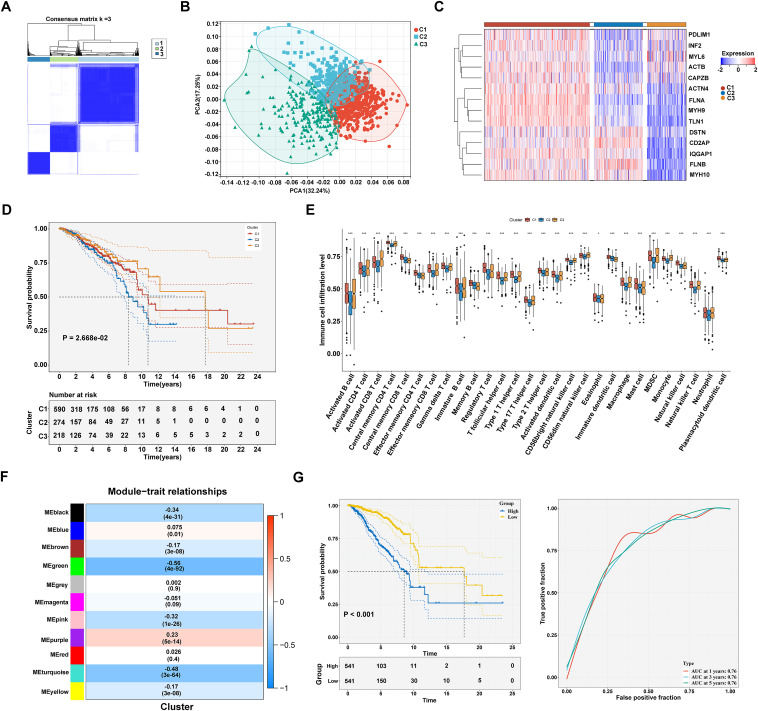
Disulfidptosis heterogeneity in breast cancer uncovers PTTG1IP as an actionable therapeutic target


Breast cancer (BRCA) is the dominating form of cancer affecting women, with an estimated 2.3 million newly diagnosed cases and 685,000 deaths in 2020.1 An emerging study has proposed a novel metabolism-related regulated cell death modality called disulfidptosis induced by abnormal accumulation of intracellular disulfides in SLC7A11high tumor cells.2 However, research on disulfidptosis remains in its infancy. The study presents for the first time a comprehensive investigation on disulfidptosis in BRCA. Diversity and complexity somatic mutations and copy number variations of disulfidptosis genes and their aberrant expression were found in breast tumors. Three disulfidptosis-based consensus clusters were established, with heterogeneous clinical, molecular, and immunogenomic features. A disulfidptosis-relevant signature (FHOD1, IL1R1, SPRY4, DOK4, TNN, ZMAT3, FEZ1, EMP1, WLS, ENPEP, RGS3, CCDC92, C11orf95, PTTG1IP, and SDC1) was proposed for reliably improving prognosis estimation. Low-risk patients more possibly responded to immune-checkpoint blockade, while high-risk patients were more sensitive to docetaxel. Disulfidptosis-relevant genes were proven to present abnormal expression in breast tumors. Disulfidptosis-relevant PTTG1IP overexpression led to aggressiveness and actin cytoskeleton formation in BRCA cells. Additionally, its overexpression induced tumor growth. These new findings proposed innovative disulfidptosis-based classification and signature for reflecting the heterogeneity of disulfidptosis in breast tumors, which might assist clinical-decision making.
